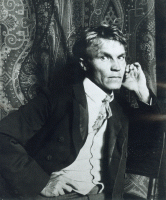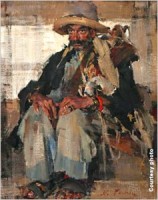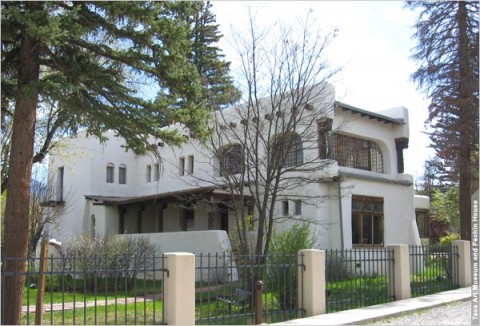Written by Louise Fenner

Washington, D.C. – Visitors to the National Cowboy & Western Heritage Museum in Oklahoma City are often surprised to see works by a Russian artist.
But Nicolai Fechin, an artist born in Kazan, Russia, spent significant time in Taos, New Mexico, in the late 1920s and early 1930s, and it was a prolific period for him. “The works we have are of Western themes, mostly from Fechin’s time in Taos,” said the curator of the Oklahoma museum, Anne Morand.
[youtube]http://www.youtube.com/watch?v=q6PvEriL2hY[/youtube]
Fechin was already an internationally recognized artist when he emigrated from Russia in 1923, first to New York and then to Taos. He continued to burnish his reputation by painting and drawing powerful portraits of Native Americans and other New Mexico residents, as well as desert landscapes.
The artist was known for “the extraordinary work he did in the very bravura brushwork, the beautiful color work, amazing compositions — and, of course, his portraits, they’re breathtaking,” Morand said.
“He brought American realism into the modernist age,” she said. “He brought with him the skills he had obtained in the [Imperial Academy of Arts in St. Petersburg] and applied them to a new subject matter, and made this wonderful kind of fusion.”

“But I think at heart he was a Russian,” Morand added. “He didn’t turn his back on his own culture.”
Fechin moved from Taos in 1933 and traveled widely, finally settling in California. He died in Santa Monica, California, in 1955.
An exhibition of 75 works by Fechin opened in Kazan, Russia, Fechin’s hometown, in early November and continues until January 15th. Twenty-two works are from U.S. collections. The exhibition will go on to Moscow and St. Petersburg and then to at least two U.S. cities. It is sponsored under the U.S.-Russia Bilateral Presidential Commission, which covers several areas of cooperation, from security-related to cultural.
The Drama of the American West

The largest public collection of Fechin works in the United States — more than 60 paintings, drawings and sculptures — is at the Stark Museum of Art in Orange, Texas, which specializes in art depicting the American West.
“I think that what makes [Fechin] special is the way he handles paint, so vibrantly, so expressively, and yet within a realistic context,” said Sarah Boehme, the museum’s managing director. She said the intensity of his portraits stems not only from the expressions depicted on the faces, but also from the way the paint itself is handled.
Fechin had a background of strong academic training in Russia and knowledge of Europe’s art movements and stylistic developments, Boehme said. Many of his instructors had been “the avant-garde, the cutting edge. He was able to bring that to America.” As a portraitist, “he was looking for faces that inspired him. And in the Southwest, he found many.”
Boehme said the dramatic characters of the American West fascinate the world because they symbolize for many people “what America is.”
In 2012, the Stark Museum is mounting an exhibition titled From Russia: Fechin and Gaspard in the Southwest, which will explore Leon Gaspard and Fechin, both of whom emigrated from Russia to the United States.
The Fechin House
As a boy, Fechin learned the art of woodcarving from his father. He used that skill when his family moved to Taos in 1927. Fechin purchased an adobe (mud brick) structure and spent seven years remodeling it, carving doors, window frames, pillars and furniture in Russian, Spanish and Southwest-influenced designs. In 2003 the home was purchased from Fechin’s granddaughter and is now the Taos Art Museum and Fechin House.
“All the wood surfaces have texture, they have life to them,” said museum director Erion Simpson. “The post-and-lintel constructions over doorways and windows are stunning. If you look out a window, you not only see the landscape, you see the beauty of [Fechin’s] creativity.”

In addition to Fechin’s artwork, the Taos museum features works by the Taos Society of Artists, an artistic cooperative formed in 1915, and other Southwest artists, including American Indians.
Many artists and visitors come to Taos because of Fechin, Simpson said. In 2008, St. Petersburg artist Nikolai Blokhin, who is inspired by Fechin, held his first-ever drawing workshop in the United States in Fechin’s studio.
And every year, Simpson said, “a busload of Russians — a tour out of Albuquerque — always stops at the Fechin house.”
“No matter what else we exhibit, we always have at least one gallery with Nicolai’s work in it so we don’t disappoint the visitors who drive all the way up here to see it,” she said.


